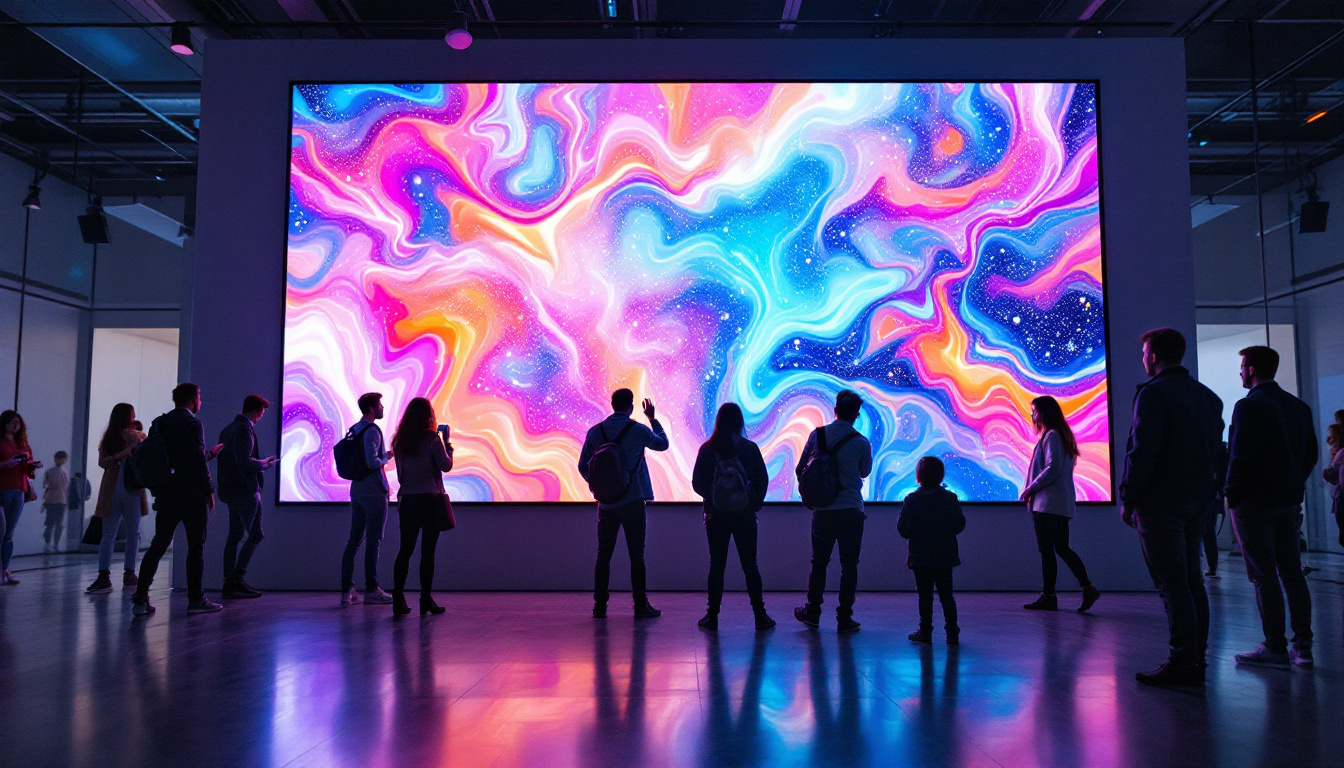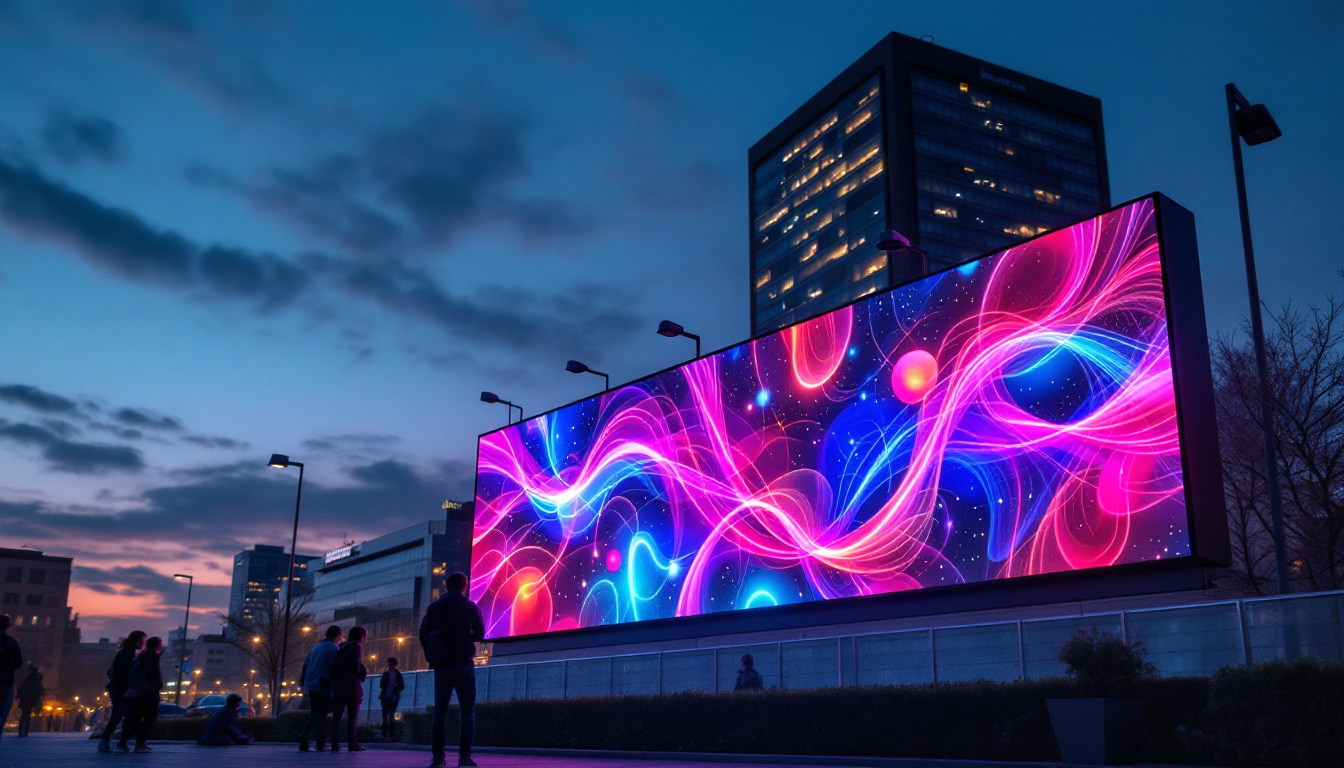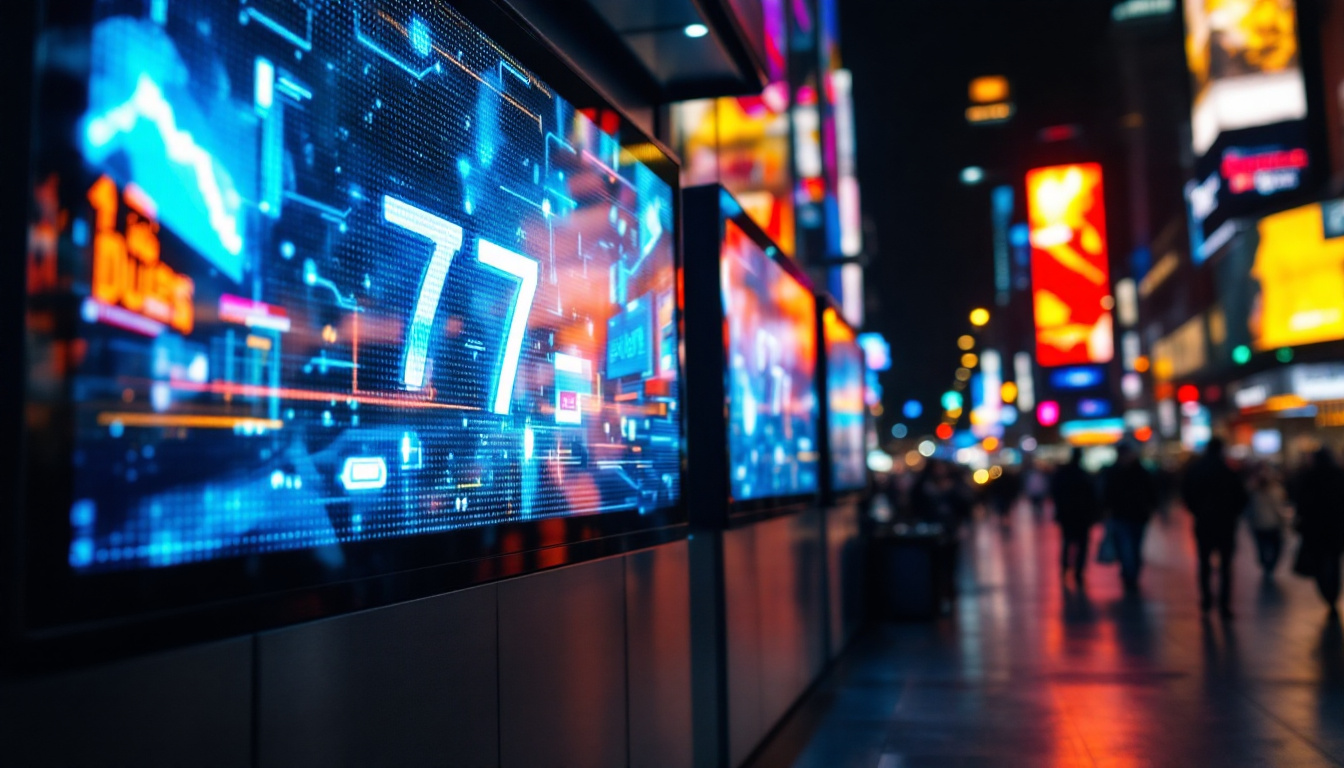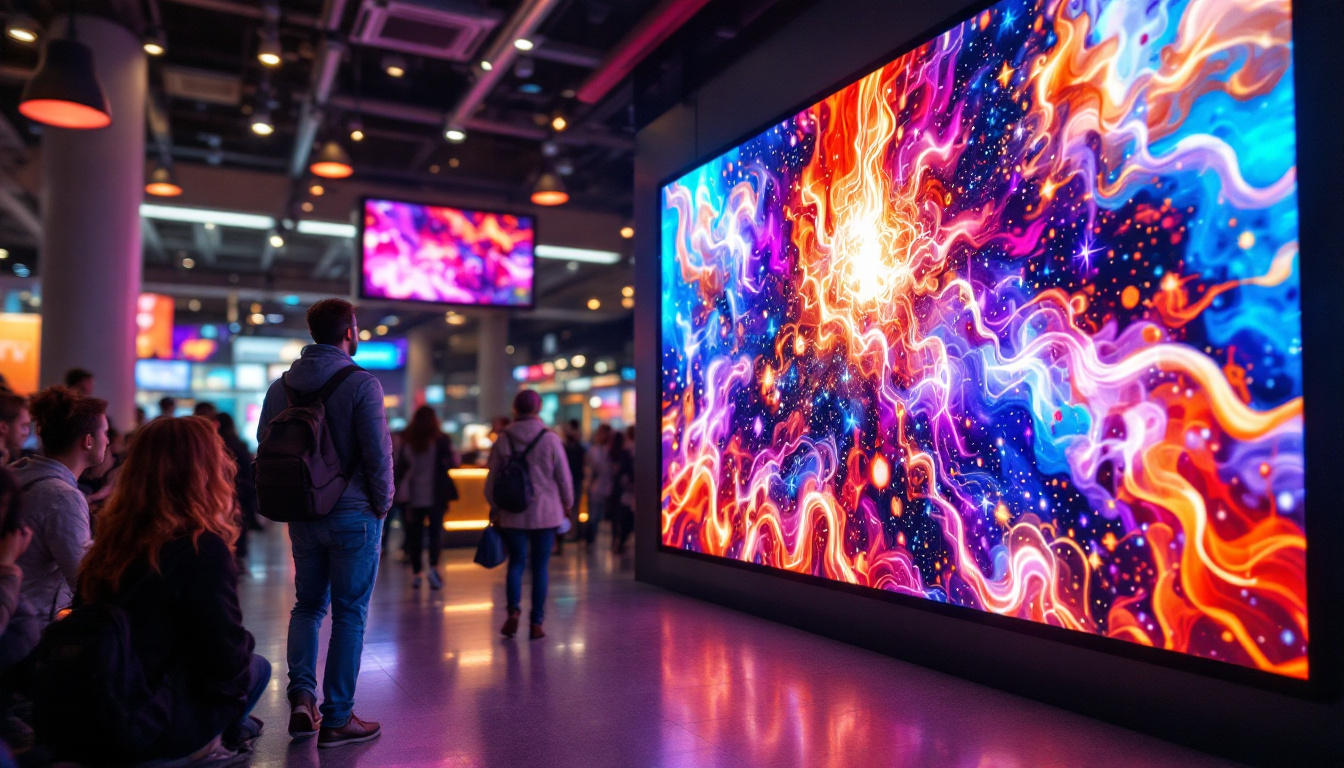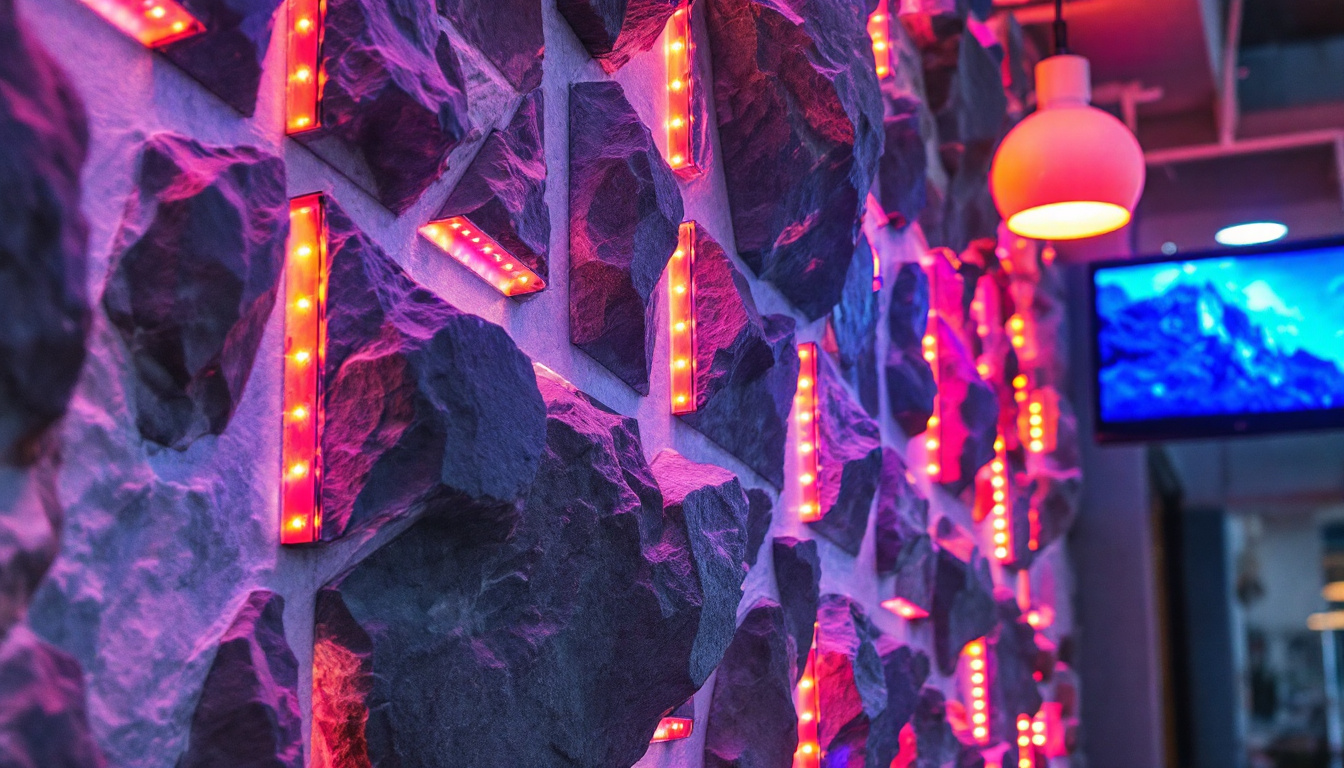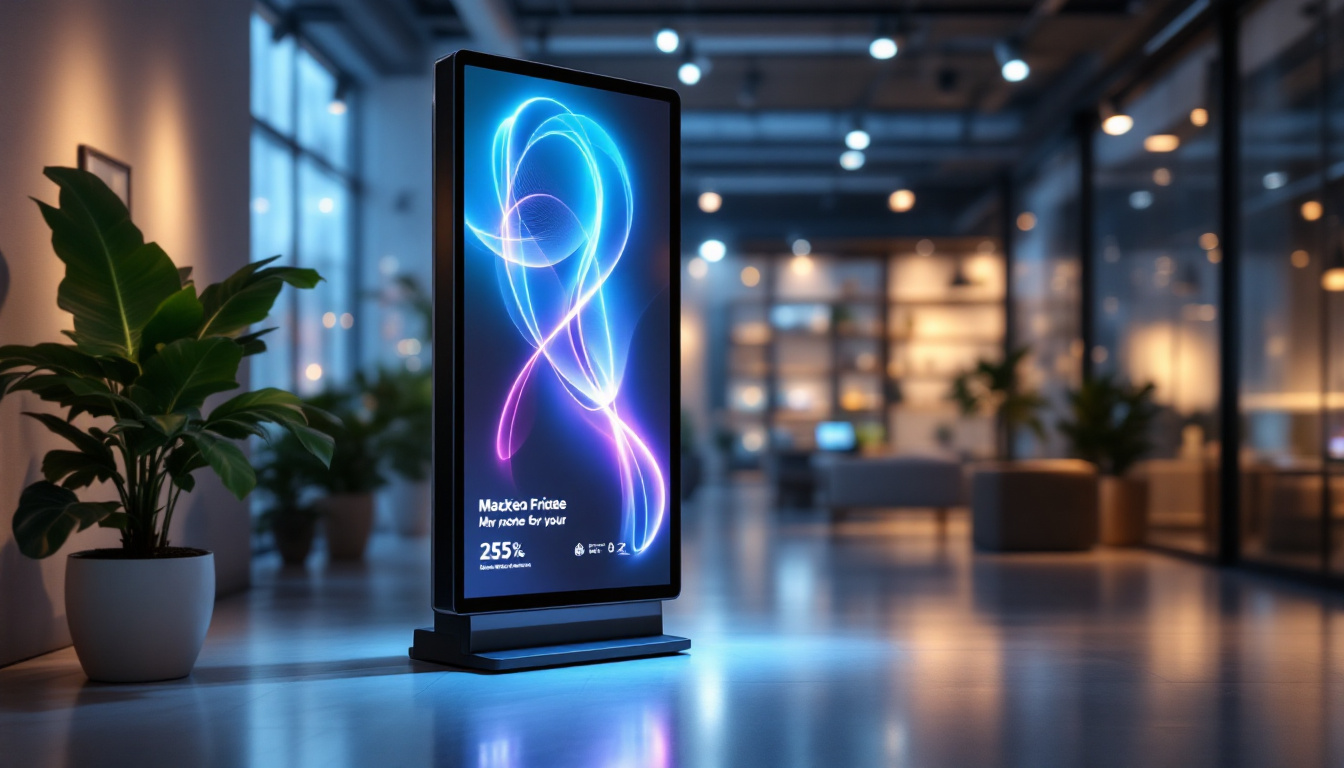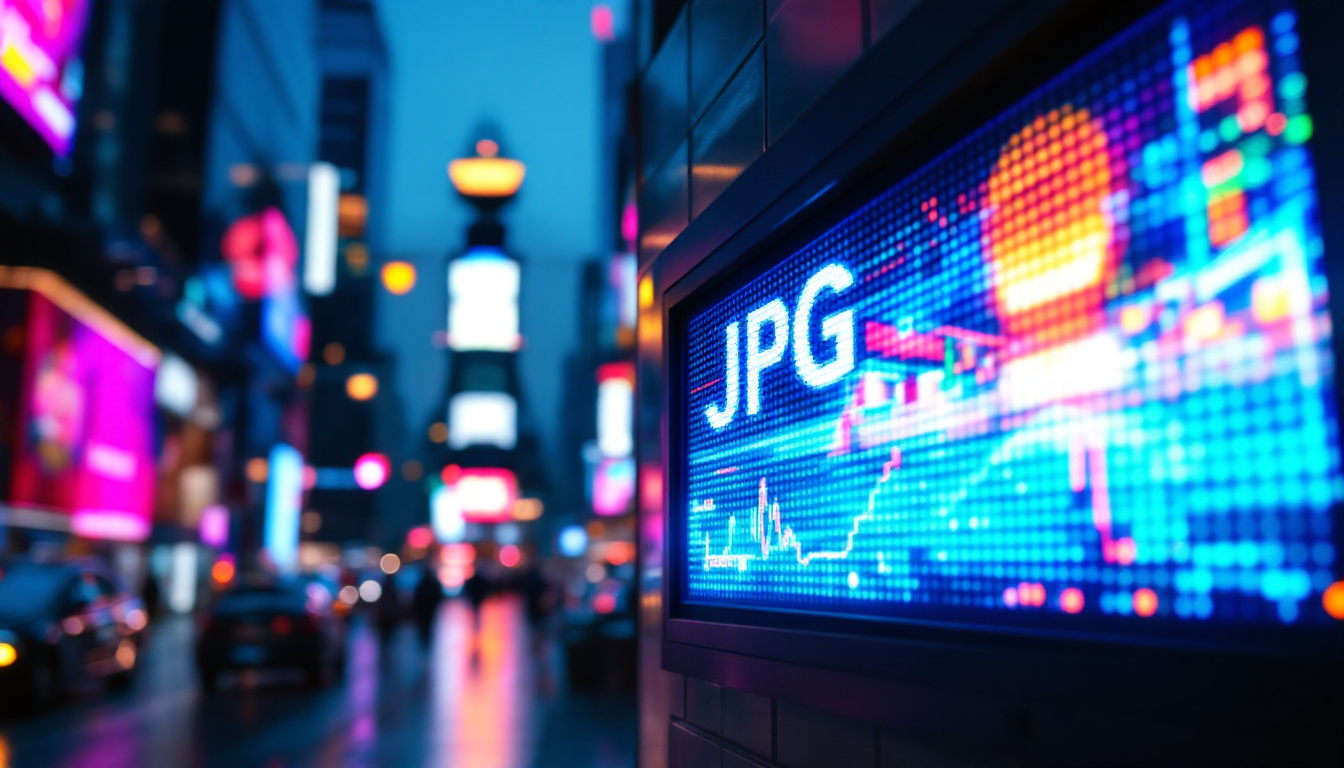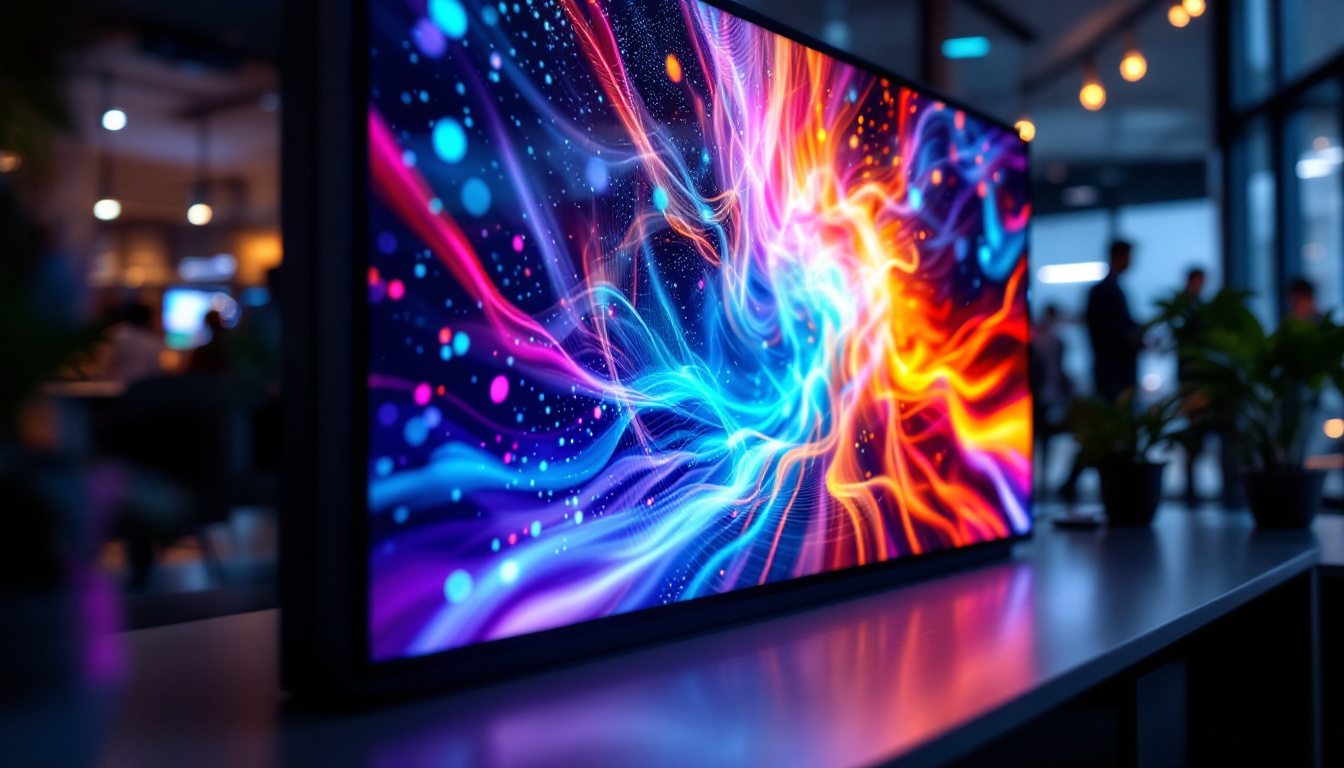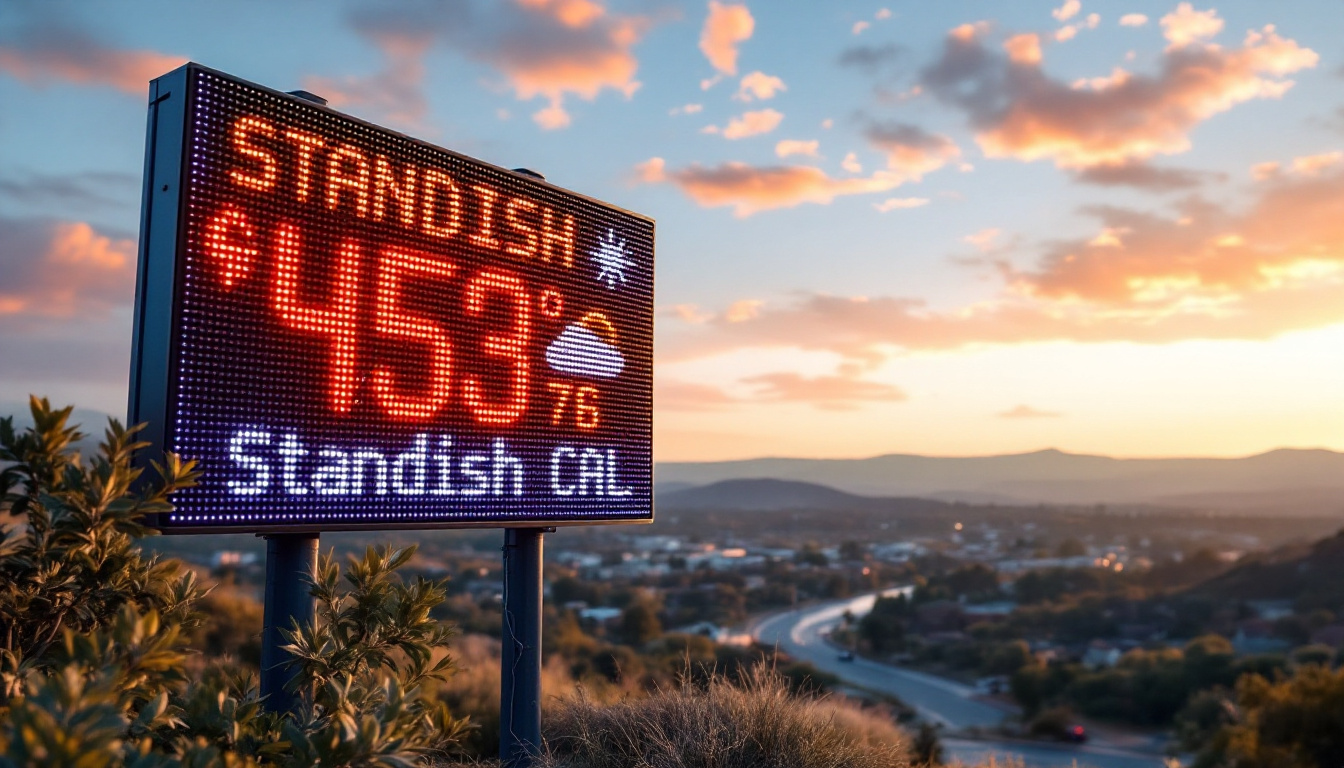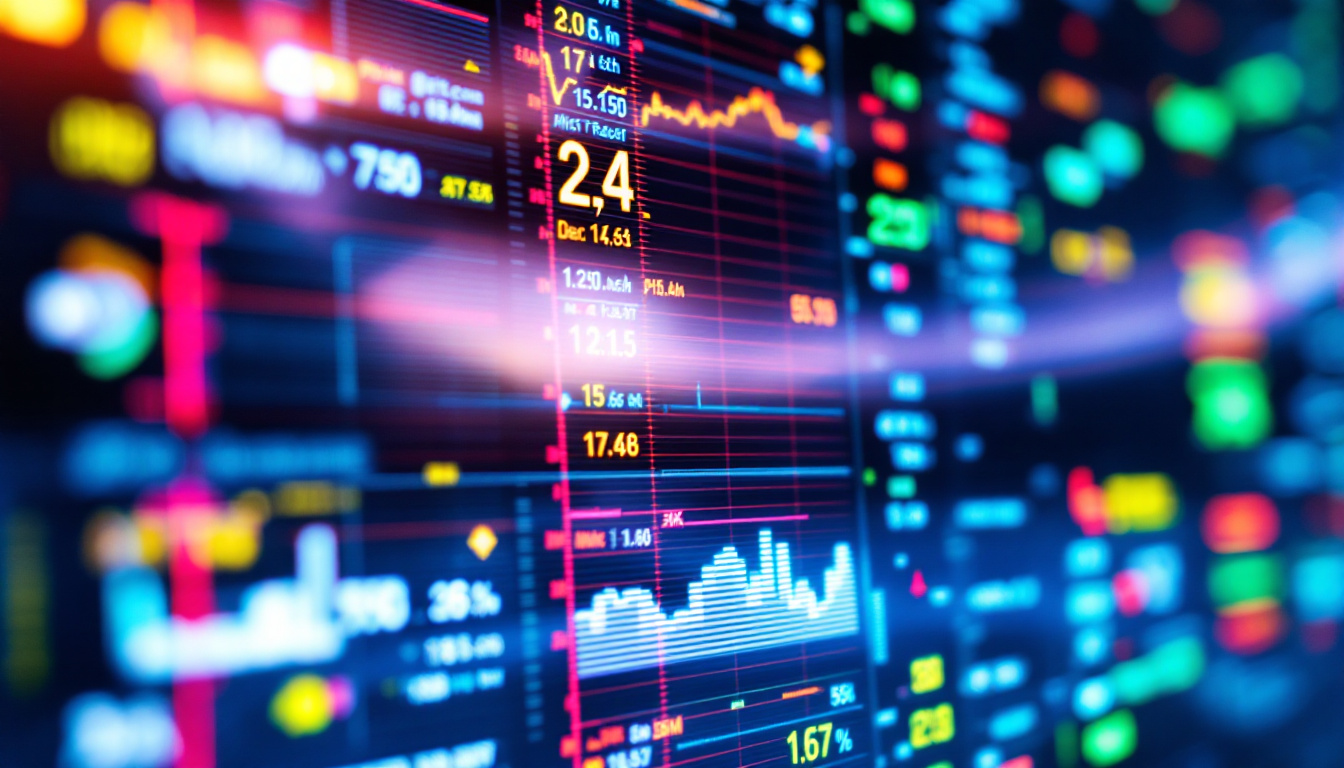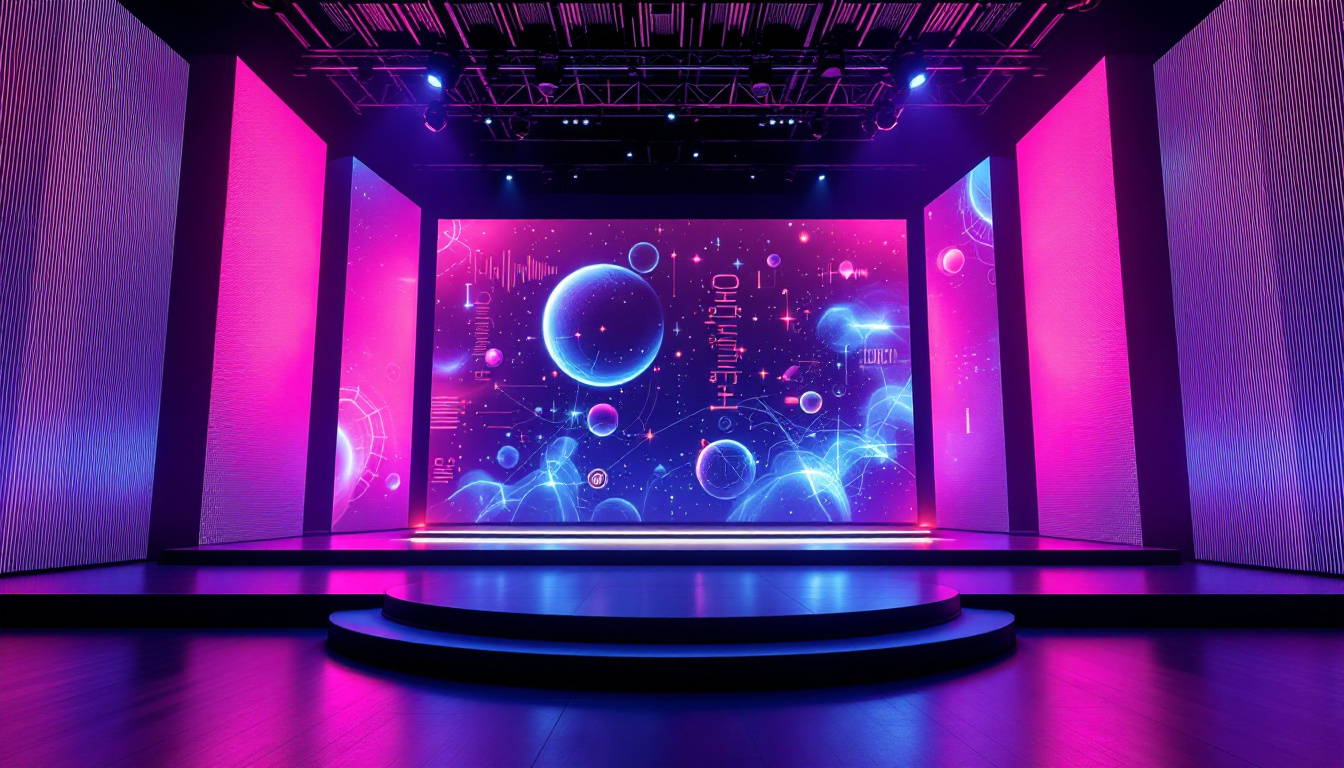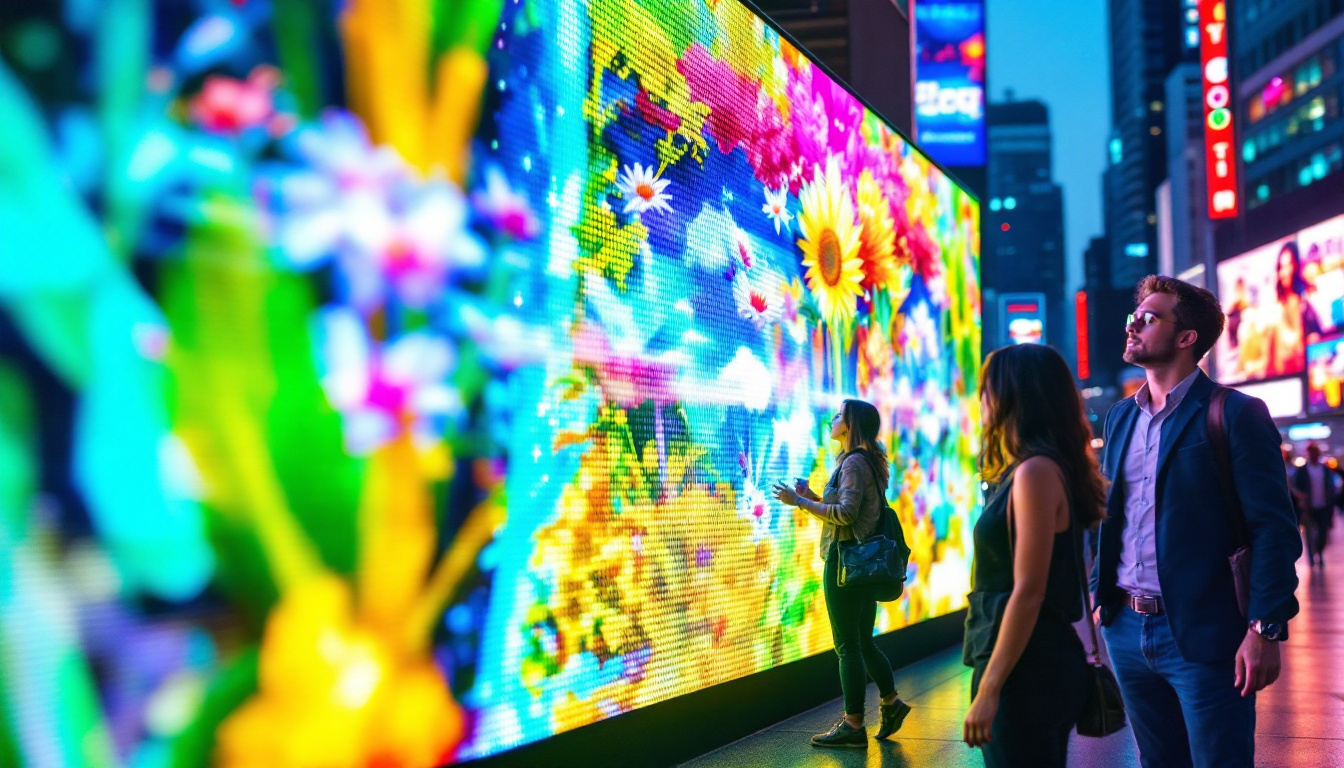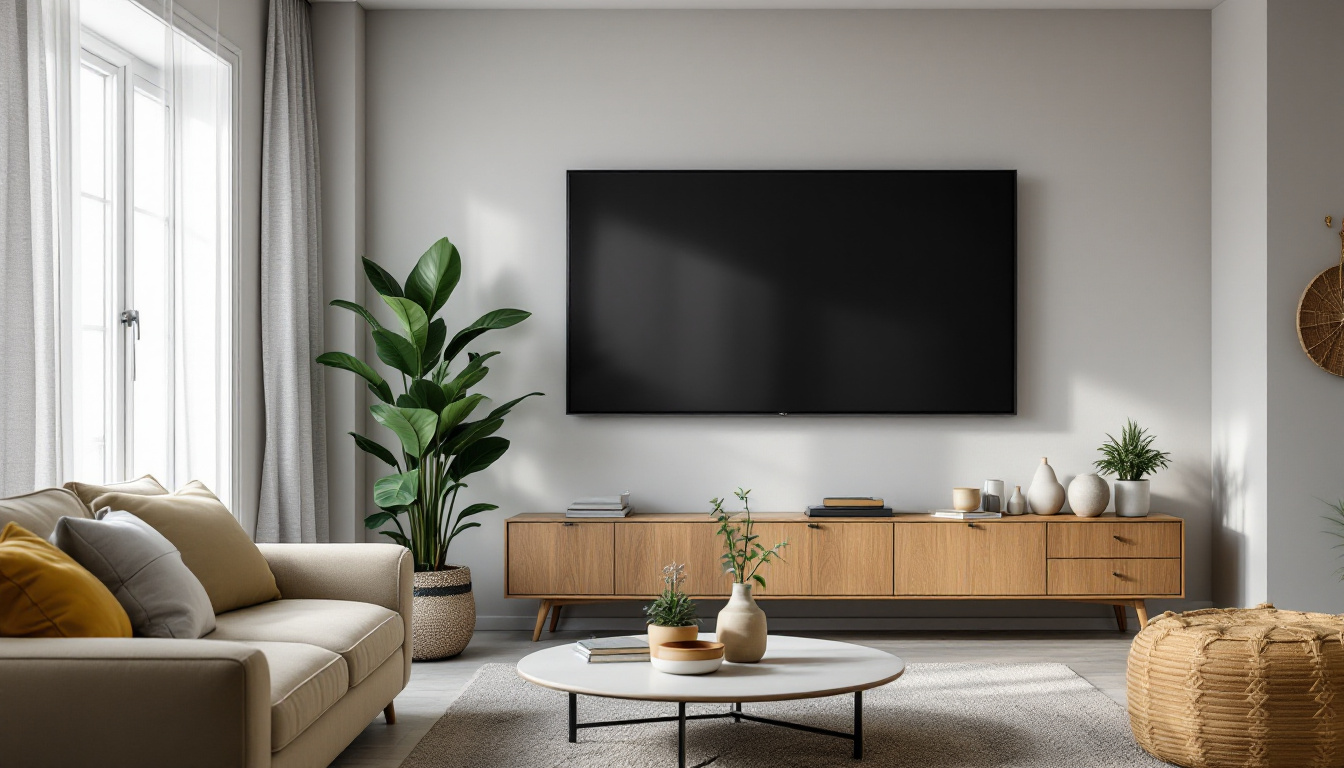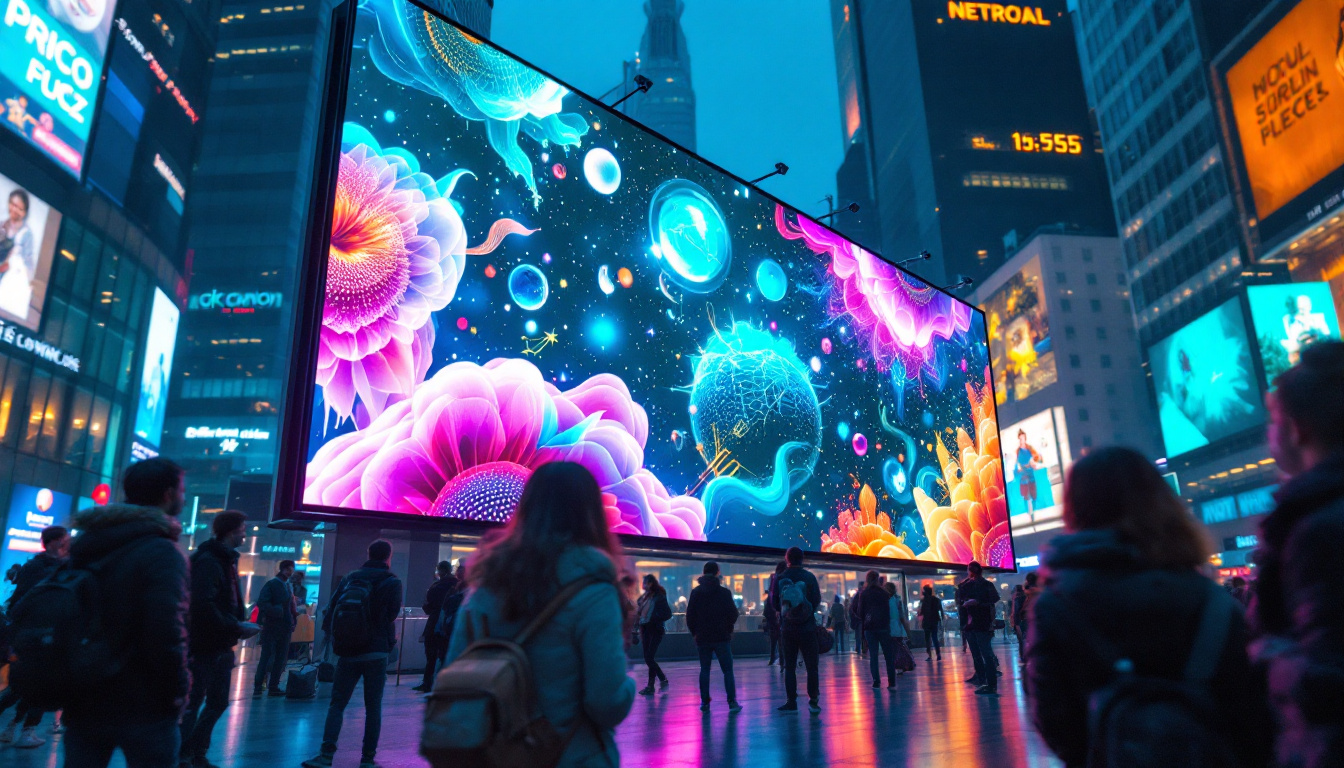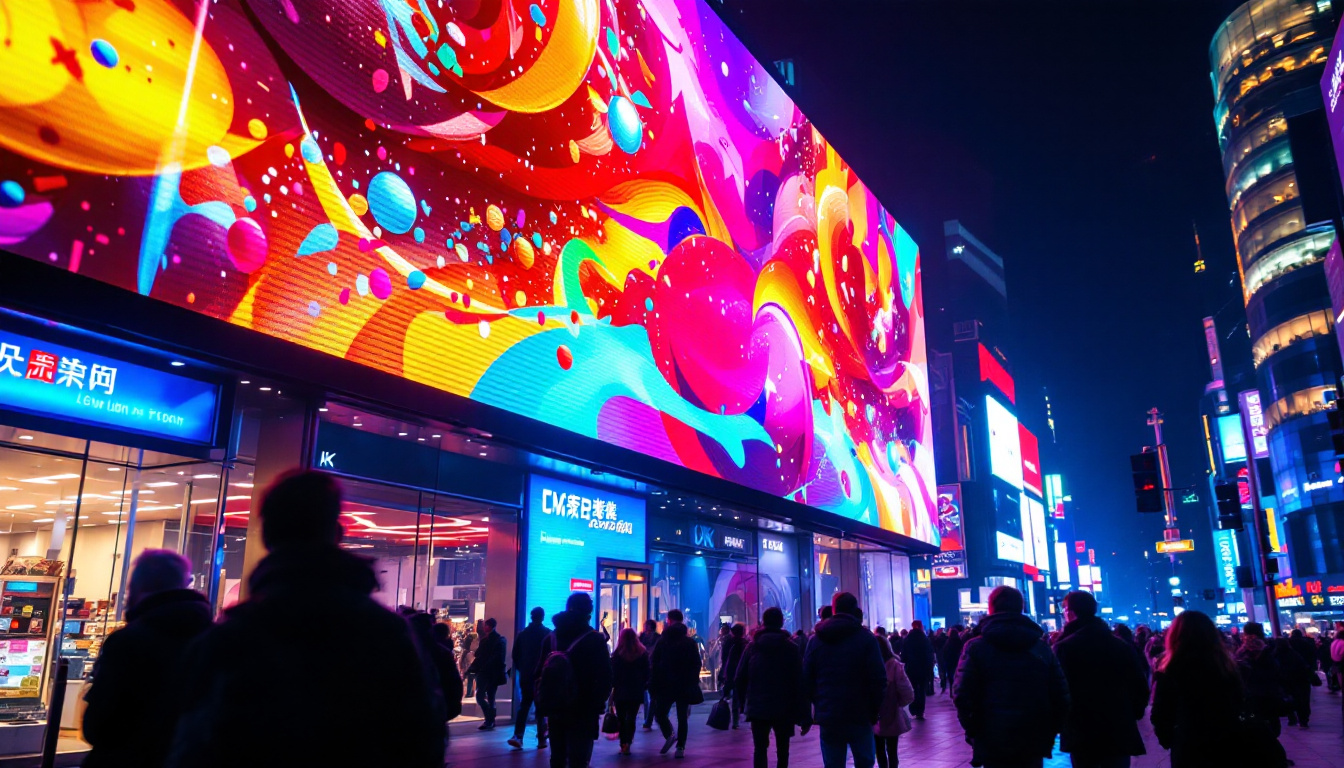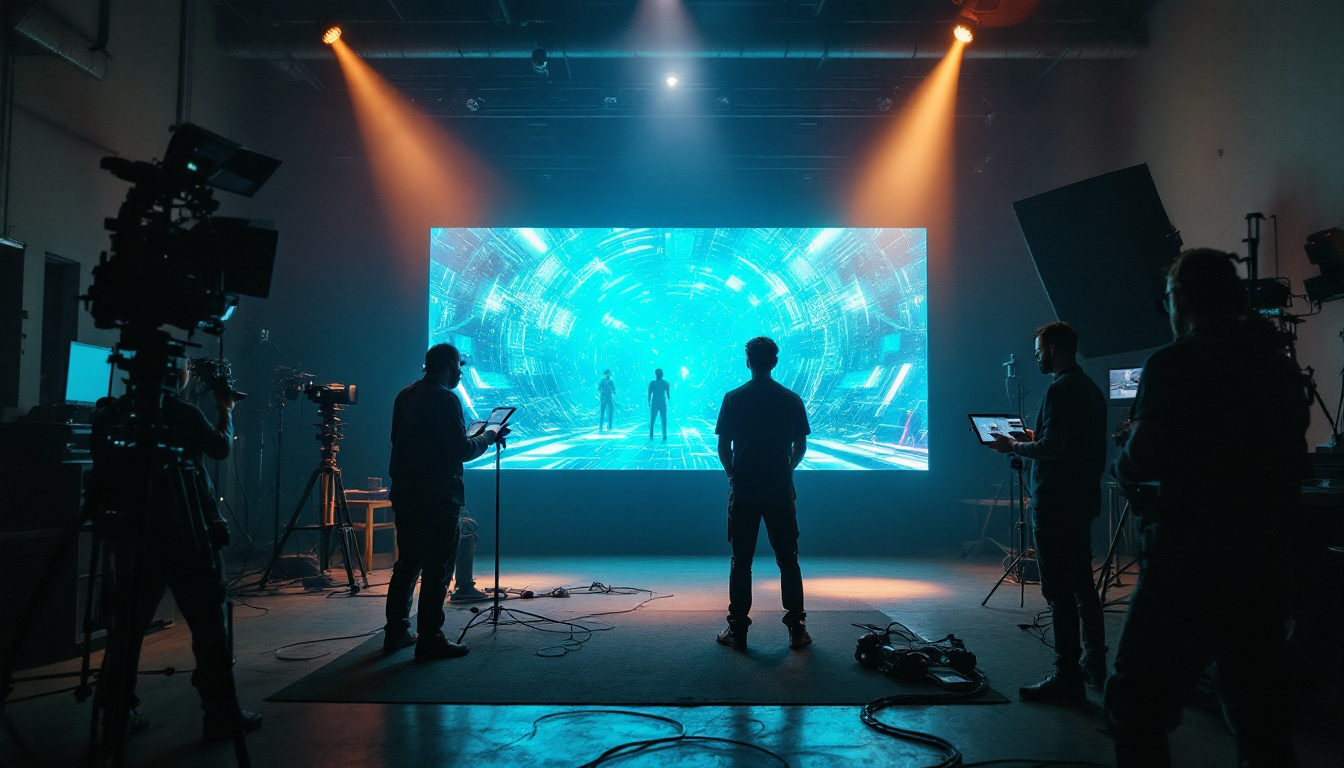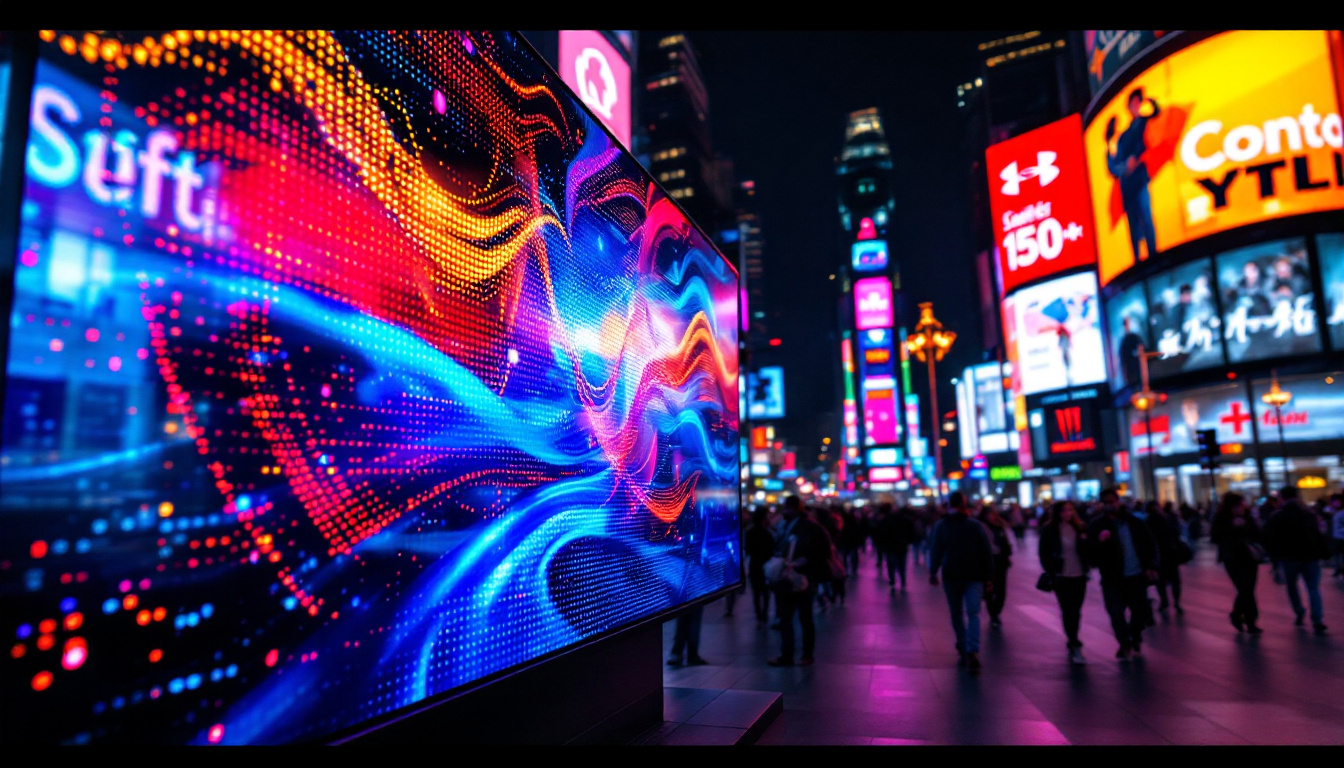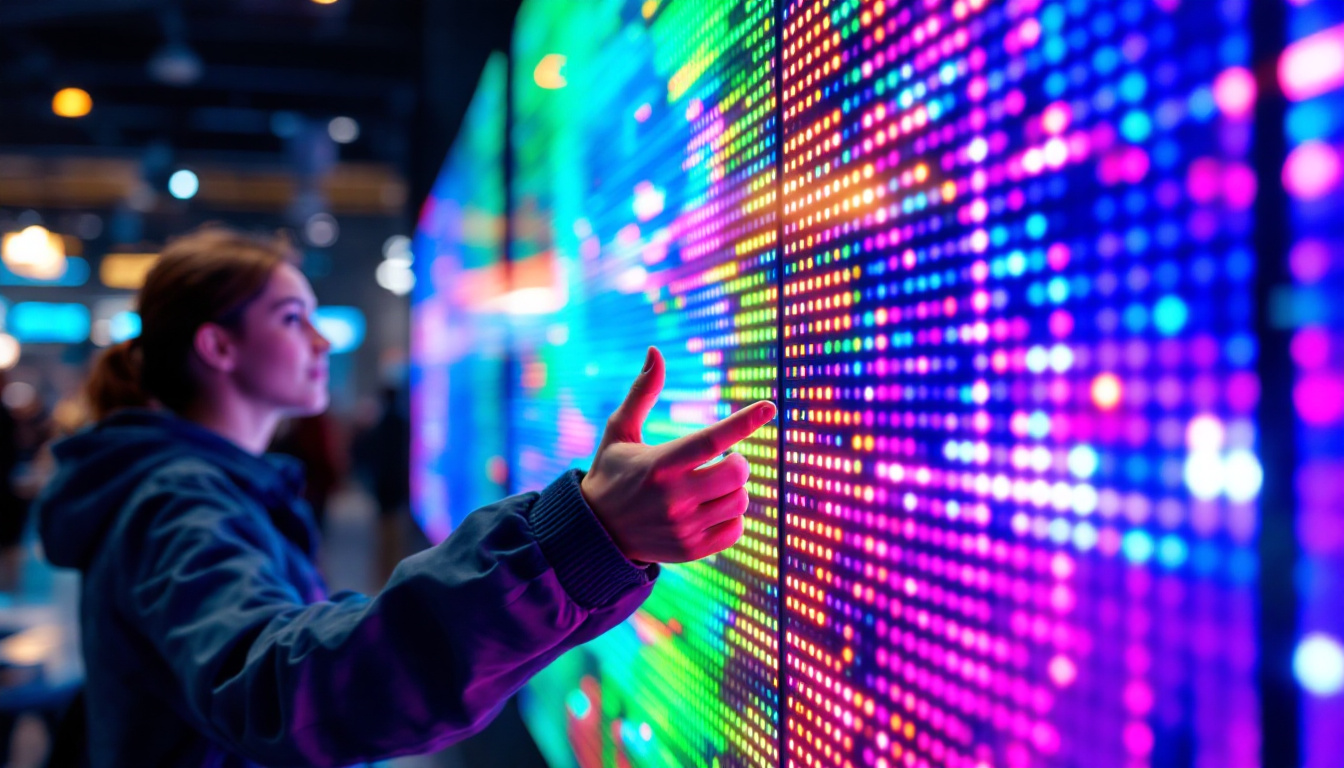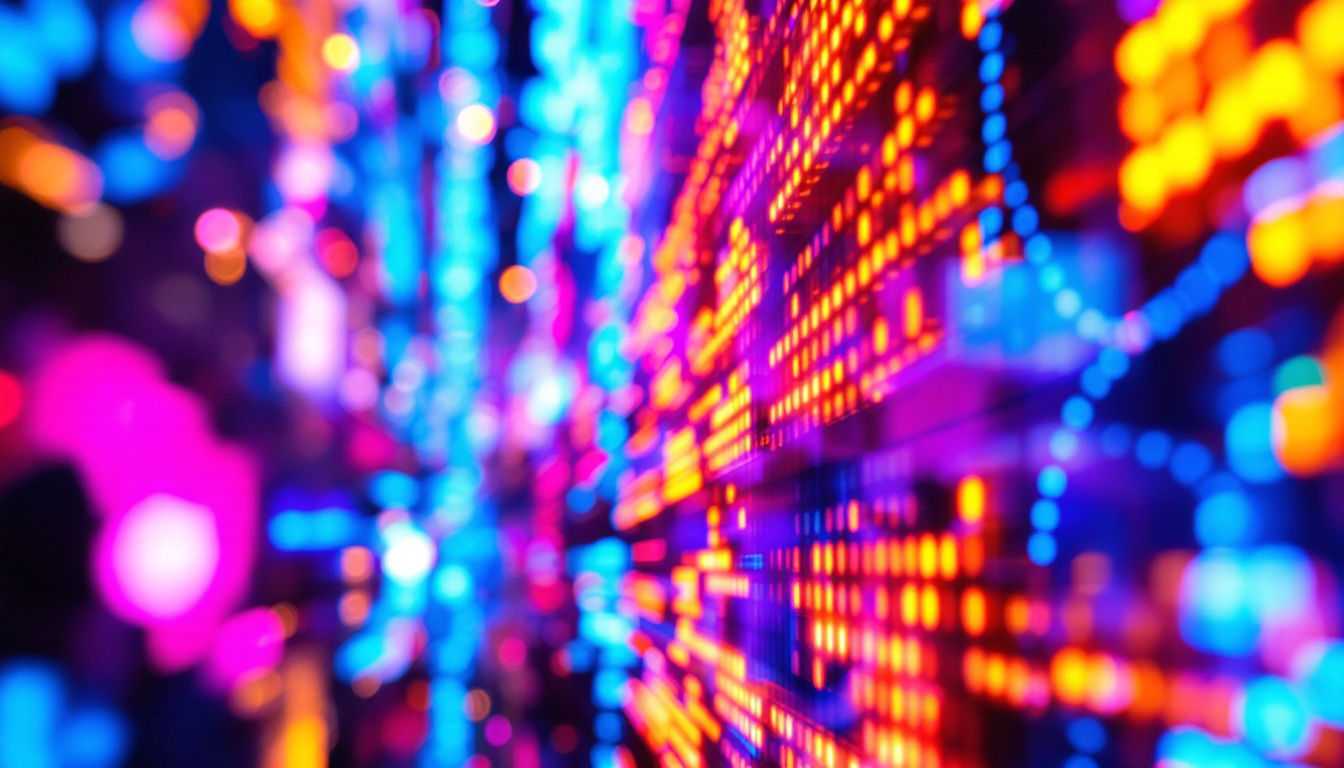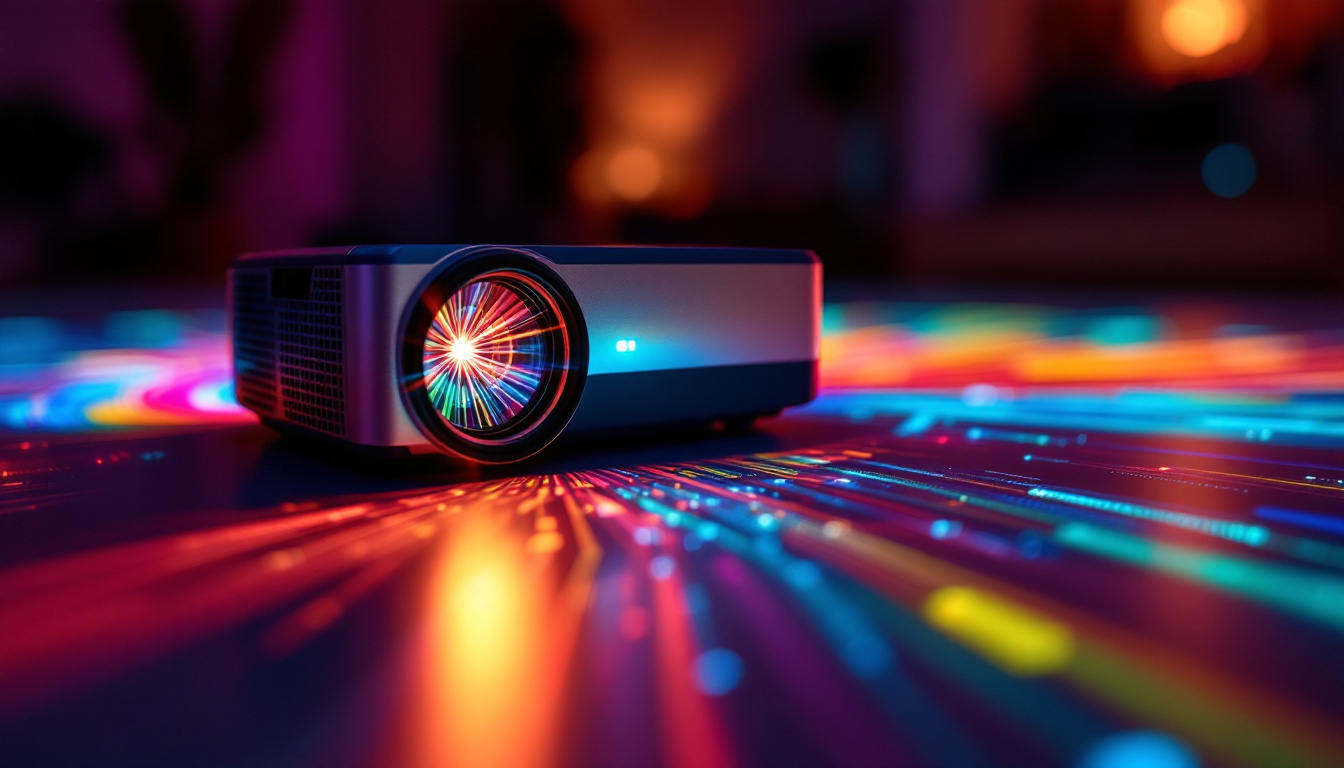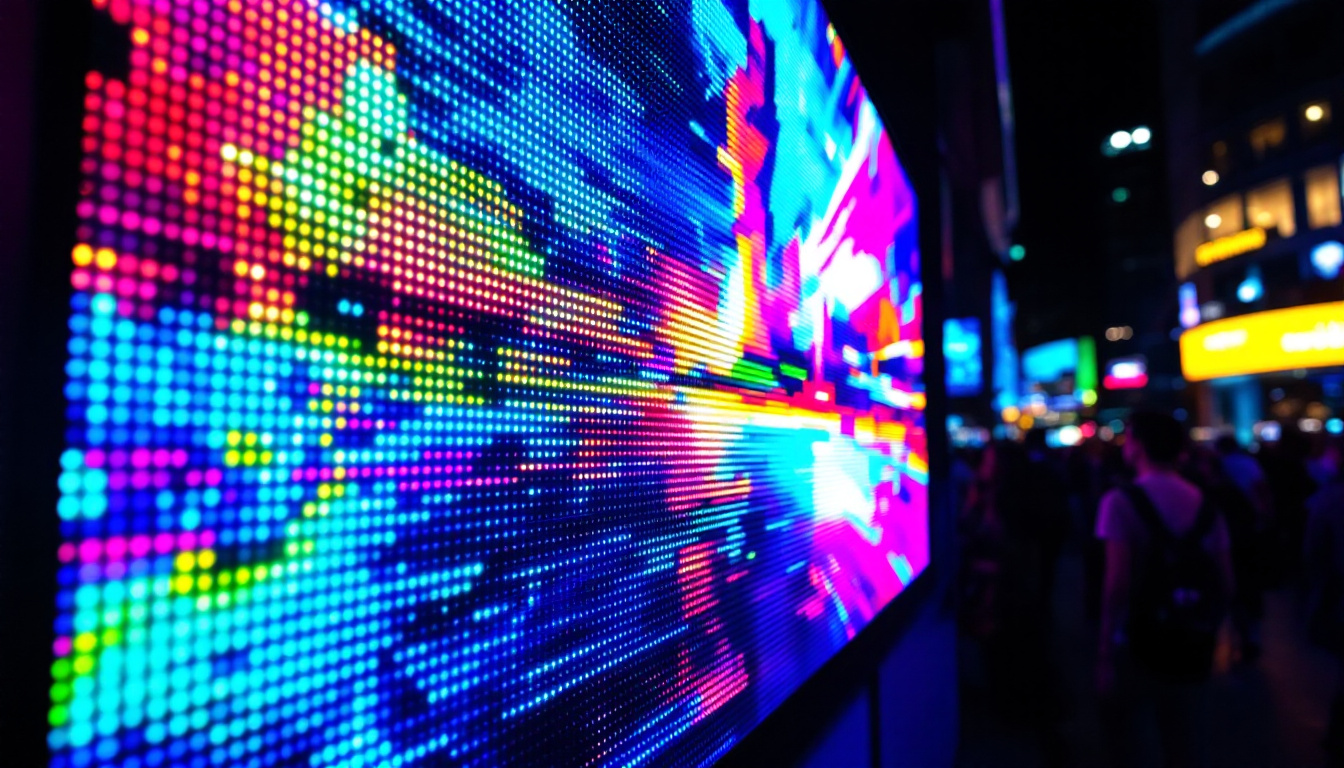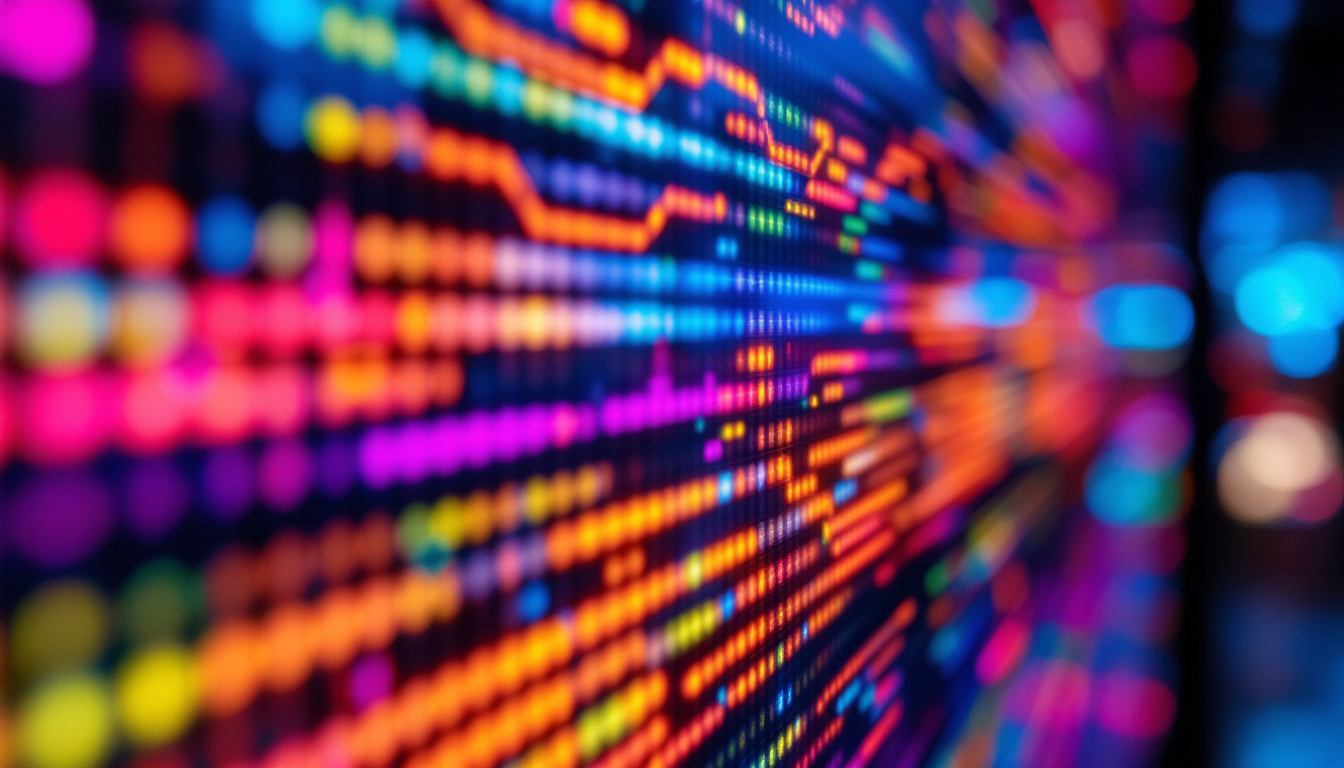In the modern age of technology, visual communication has taken center stage, and one of the most impactful tools in this realm is the LED display panel wall. These vibrant, eye-catching displays have transformed the way information is shared, whether in corporate settings, public spaces, or entertainment venues. This article delves into the intricacies of LED display panel walls, exploring their functionality, advantages, and applications.
Understanding LED Display Technology
LED, or Light Emitting Diode, technology has revolutionized the display industry. Unlike traditional LCD or projection systems, LED displays utilize thousands of tiny diodes to emit light, resulting in brighter images and deeper colors. This technology has become the backbone of modern display solutions, particularly in large-format applications. The shift towards LED technology has not only improved visual quality but has also led to significant energy savings, making it a more sustainable choice for businesses and consumers alike.
How LED Displays Work
At the core of an LED display is a matrix of diodes that can be individually controlled. Each diode emits light in specific colors—red, green, or blue—which combine to produce a full spectrum of colors. By adjusting the intensity of each diode, the display can create stunning visuals that are not only vibrant but also highly detailed. This precise control allows for dynamic content to be showcased effectively, whether it’s a high-definition video or a simple text message, enhancing the viewer’s experience significantly.
LED displays can be categorized into two main types: direct view and rear-projected. Direct view LED displays are composed of individual LED modules that are mounted together to form a larger screen. Rear-projected LED displays, on the other hand, use a combination of LED light sources and projection technology to create images. Both types have their unique advantages and are chosen based on the intended application. For instance, direct view displays are often favored for their superior brightness and contrast, making them ideal for outdoor settings, while rear-projected displays are more suited for environments where space is limited.
Types of LED Display Panels
LED display panels come in various types, each designed for specific environments and uses. The most common types include:
- Indoor LED Displays: These are designed for use in controlled environments such as conference rooms, shopping malls, and theaters. They typically have a higher pixel density, providing sharper images at closer viewing distances. Indoor displays often feature advanced technologies like high refresh rates, ensuring smooth video playback and reducing motion blur.
- Outdoor LED Displays: Built to withstand the elements, outdoor displays are often used for advertising billboards, sports arenas, and public events. They are brighter and more durable, ensuring visibility even in direct sunlight. Many outdoor displays also come with protective coatings to guard against rain, dust, and UV damage, extending their lifespan and maintaining image quality over time.
- Transparent LED Displays: These innovative displays allow for visibility behind the screen while still providing visual content. They are often used in retail environments to create eye-catching displays without obstructing views. This type of display not only enhances aesthetics but also facilitates interactive experiences, allowing customers to engage with products while still being able to see through the screen.
In addition to these common types, there are also specialized LED displays designed for unique applications, such as flexible LED screens that can be bent or shaped to fit various surfaces. These flexible displays open up new possibilities for creative installations in architecture and design, allowing for dynamic advertising and artistic expressions that were previously unimaginable. As technology continues to evolve, the versatility and functionality of LED displays are expected to expand even further, paving the way for innovative uses across multiple industries.
Advantages of LED Display Panel Walls
LED display panel walls offer a multitude of advantages that make them a preferred choice for many applications. Their unique characteristics provide significant benefits in terms of performance, efficiency, and versatility.
High Brightness and Visibility
One of the most notable advantages of LED displays is their high brightness levels. Unlike traditional displays, LED panels can produce vibrant images even in well-lit environments. This makes them ideal for outdoor advertising and events where visibility is crucial.
The ability to adjust brightness levels also allows for optimal viewing experiences in various lighting conditions. Whether it’s a dimly lit conference room or a sunlit outdoor space, LED displays can be tailored to ensure that content is always clear and engaging.
Energy Efficiency
Energy consumption is a critical consideration in today’s environmentally conscious world. LED technology is known for its energy efficiency, consuming significantly less power compared to traditional display technologies. This not only reduces operational costs but also minimizes the carbon footprint associated with powering large display systems.
Moreover, advancements in LED technology have led to even more efficient designs, allowing for longer operational lifespans and lower maintenance costs. This makes LED display panel walls a sustainable choice for businesses looking to reduce their environmental impact.
Versatility in Applications
LED display panel walls are incredibly versatile and can be adapted for a wide range of applications. From corporate presentations and digital signage to concerts and sporting events, these displays can meet diverse needs. Their modular design allows for easy scalability, enabling users to create custom-sized displays that fit specific spaces.
Additionally, the ability to display dynamic content—such as videos, animations, and live feeds—enhances their effectiveness in capturing audience attention. This adaptability makes LED displays a powerful tool for marketers, event organizers, and educators alike.
Applications of LED Display Panel Walls
The applications of LED display panel walls are vast and varied, reflecting their versatility and effectiveness in different environments. Below are some of the most common uses of this technology.
Advertising and Marketing
In the realm of advertising, LED display panel walls have become a staple. Their ability to showcase high-quality visuals and dynamic content makes them an ideal medium for marketers looking to capture consumer attention. From large billboard displays in urban areas to smaller screens in retail environments, LED technology helps brands communicate their messages effectively.
Furthermore, the interactive capabilities of some LED displays allow for engaging consumer experiences. Touchscreen interfaces and integration with mobile devices can create a more personalized interaction, enhancing the overall impact of marketing campaigns.
Corporate and Event Use
In corporate settings, LED display panel walls are increasingly used for presentations, conferences, and training sessions. Their high-resolution capabilities ensure that all attendees, regardless of their seating position, can view the content clearly. This enhances communication and collaboration within organizations.
For events, such as concerts and festivals, LED displays provide a dynamic backdrop that enhances the overall experience. They can be used to display live feeds, promotional content, or artistic visuals, creating an immersive environment for attendees.
Public Information and Transportation
LED displays are also widely used in public information systems, including transportation hubs like airports and train stations. These displays provide real-time updates on schedules, delays, and other important information, ensuring that travelers stay informed.
Additionally, municipalities are adopting LED technology for public announcements and community events. The ability to quickly update content and display emergency information makes LED displays a valuable asset for public safety and communication.
Challenges and Considerations
While LED display panel walls offer numerous benefits, there are also challenges and considerations that potential users should be aware of. Understanding these factors can help in making informed decisions about their implementation.
Initial Investment Costs
One of the primary challenges associated with LED display panel walls is the initial investment cost. High-quality LED displays can be expensive, and the cost may deter some businesses from adopting this technology. However, it is essential to consider the long-term benefits, including energy savings and reduced maintenance costs, which can offset the initial expenditure over time.
Additionally, the price of LED technology has been decreasing over the years, making it more accessible for various businesses and applications. As technology continues to advance, it is expected that costs will continue to decline.
Installation and Maintenance
Another consideration is the installation and maintenance of LED display panel walls. Proper installation is crucial to ensure optimal performance and longevity. This often requires skilled technicians who are familiar with the technology and installation processes.
Maintenance is also an important factor to consider. While LED displays are generally low-maintenance, periodic checks and servicing are necessary to ensure they continue to operate at peak performance. Users should factor in these ongoing costs when planning their budget.
The Future of LED Display Technology
The future of LED display technology looks promising, with ongoing advancements that are set to enhance functionality and performance. As technology evolves, several trends are emerging that will shape the future of LED displays.
Improved Resolution and Pixel Density
As consumer demand for higher quality visuals continues to grow, manufacturers are focusing on improving resolution and pixel density in LED displays. This will result in sharper images and more detailed content, making LED displays even more appealing for various applications.
MicroLED technology, for instance, is gaining traction as a potential game-changer in the display industry. This technology allows for even smaller pixels, leading to higher resolutions and improved color accuracy, making it ideal for high-end applications.
Integration with Smart Technologies
Another significant trend is the integration of LED displays with smart technologies. As the Internet of Things (IoT) continues to expand, LED displays are being designed to connect with other devices and systems. This enables real-time data sharing, interactive content, and enhanced user experiences.
For example, smart LED displays can adjust their brightness based on ambient light conditions or interact with mobile devices to provide personalized content. This level of interactivity is likely to become a standard feature in future LED display solutions.
Conclusion
LED display panel walls have transformed the landscape of visual communication, offering unparalleled brightness, energy efficiency, and versatility. Their applications span various sectors, from advertising and corporate environments to public information systems. While challenges such as initial costs and maintenance exist, the long-term benefits of adopting LED technology are undeniable.
As advancements continue to shape the future of LED displays, businesses and organizations that embrace this technology will be well-positioned to leverage its advantages. The integration of smart technologies and improvements in resolution will further enhance the effectiveness of LED displays, making them an essential tool for engaging audiences and conveying information in the digital age.
Explore Cutting-Edge LED Display Solutions with LumenMatrix
Ready to elevate your visual communication strategy? Discover the innovative world of LumenMatrix, where our advanced LED display modules bring your brand to life. From the immersive Indoor LED Wall Display to the dynamic Outdoor LED Wall Display, and from the versatile Vehicle LED Display to the sleek LED Poster Display, our solutions are designed to captivate and engage. Experience the future of digital signage with our LED Sports Display, interactive Floor LED Display, and the stunning clarity of our Custom and All-in-One LED Displays, including the revolutionary LED Transparent Display. Embrace the power of LumenMatrix to create unforgettable visual experiences. Check out LumenMatrix LED Display Solutions today and transform the way you share your message.

